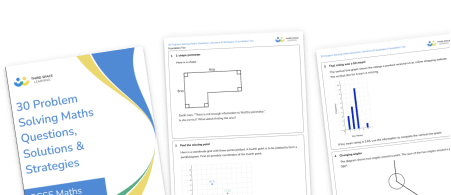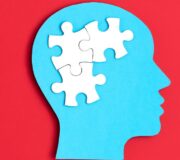Adaptive Teaching: A Practical Step-by-Step Guide
Adaptive teaching is a promising approach to providing quality education to all students. It aims to help learners reach the same goals and learn the same skills and concepts, using technology, data analysis, and ongoing assessment.
This article offers a practical guide to implementing adaptive teaching strategies in primary and secondary schools, leading to fewer knowledge gaps and better long-term progress for all students.
- What is adaptive teaching?
- Adaptive teaching vs. differentiation
- Adaptive teaching in the Early Career Frameworks
- The importance of adaptive teaching
- Adaptive teaching tips
- What are the advantages and disadvantages of adaptive teaching?
- Useful tools for adaptive teaching
- What are some examples of adaptive teaching?
- Taking a whole-school approach to adaptive teaching
- Adaptive teaching resources available from Third Space Learning
What is adaptive teaching?
Adaptive teaching is an approach a teacher will use to continually assess the strengths and needs of learners and adapt their teaching accordingly to ensure all learners can meet expectations. Technology may play a part in both assessment and subsequent personalization of the teaching but it is not essential.
With adaptive teaching, the teacher plans for the whole class and makes changes to the curriculum or resources so that all learners can achieve the same goals.
Adaptive teaching vs. differentiation
The difference between differentiation and adaptive teaching is the approach to the learning needs of students. While differentiation focuses on meeting the needs of an individual or a group of students, adaptive teaching focuses on the whole class in real-time.
Differentiation involves a teacher making adjustments to a lesson or scheme of learning to meet the needs of different learners. This could mean changing:
- The content;
- Process;
- Desired outcomes of the lesson.
All learners in a class, even those setted for ability, have different levels of prior attainment. Therefore, they require some level of differentiation in every lesson. However, the way that teachers approach planning for this differentiated learning has been under increased focus.
Differentiation for learning became a policy in many schools. Teachers were expected to produce multiple worksheets at different levels for “All, Most, Some” or “Must, Should, Could” style learning objectives.
The goal was to enable different groups of students to have different personalised starting points. This led to learners completing different tasks during a lesson, which resulted in different levels of understanding and outcomes.
The approach could sometimes have unintended consequences such as:
- Lowering expectations
- Widening the knowledge gaps between learners
- In turn, increasing the workload of teachers
30 Problem Solving Maths Questions, Solutions & Strategies
Help your students prepare for their maths GCSE with these free problem solving maths questions, solutions and strategies. Includes 10 Foundation, 10 Higher & 10 crossover questions
Download Free Now!Adaptive teaching is what many consider an evolution of differentiation.
The terminology has been in use for a number of years and is part of both the Department for Education Teachers’ Standards and the Early Career Framework.
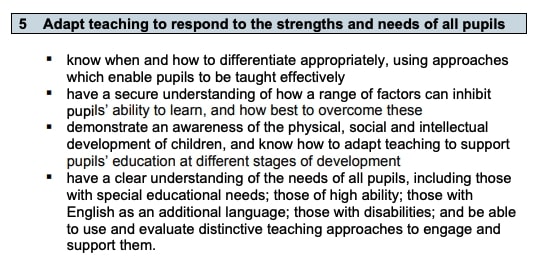
In the DfE Teachers’ Standards, much of the language and recommendations are often vague, and some of them seem to promote adapting to learning styles, which has no evidential support. The Early Career Framework is clearer and worth reading.
Adaptive teaching in the Early Career Frameworks
Standard 5 of the Early Career Framework (ECF) for new teachers states that teachers should learn that:
| 1. Pupils are likely to learn at different rates and to require different levels and types of support from teachers to succeed. 2. Seeking to understand pupils’ differences, including their different levels of prior knowledge and potential barriers to learning, is an essential part of teaching. 3. Adapting teaching in a responsive way, including by providing targeted support to pupils who are struggling, is likely to increase pupil success. 4. Adaptive Teaching is less likely to be valuable if it causes the teacher to artificially create distinct tasks for different groups of pupils or to set lower expectations for particular pupils. 5. Flexibly grouping pupils within a class to provide more tailored support can be effective, but care should be taken to monitor its impact on engagement and motivation, particularly for low attaining pupils. 6. There is a common misconception that pupils have distinct and identifiable learning styles. This is not supported by evidence and attempting to tailor lessons to learning styles is unlikely to be beneficial. 7. Pupils with special educational needs or disabilities are likely to require additional or adapted support; working closely with colleagues, families and pupils to understand barriers and identify effective strategies is essential. Early Career Framework – Department for Education |
Teachers must learn how to:
| Develop an understanding of different pupil needs, by: Identifying pupils who need new content broken down further.. Making use of formative assessment. Working closely with the Special Educational Needs Co-ordinator (SENCO) and special education professionals and the Designated Safeguarding Lead. Using the SEND Code of Practice, which provides additional guidance on supporting pupils with SEND effectively. Provide opportunity for all pupils to experience success, by: Adapting lessons, whilst maintaining high expectations for all, so that all pupils have the opportunity to meet expectations. Balancing input of new content so that pupils master important concepts. Making effective use of teaching assistants. Meet individual needs without creating unnecessary workload, by: Making use of well-designed resources (e.g. textbooks). Planning to connect new content with pupils’ existing knowledge or providing additional pre-teaching if pupils lack critical knowledge. Building in additional practice or removing unnecessary expositions. Reframing questions to provide greater scaffolding or greater stretch. Considering carefully whether intervening within lessons with individuals and small groups would be more efficient and effective than planning different lessons for different groups of pupils. Group pupils effectively, by: Applying high expectations to all groups, and ensuring all pupils have access to a rich curriculum. Changing groups regularly, avoiding the perception that groups are fixed. Ensuring that any groups based on attainment are subject specific. Early Career Framework – Department for Education |
The ECF guidance can be summarised in a few key points:
- Understand the unique needs of your students and provide targeted support;
- Consider how the students’ previous learning may impact their current learning;
- Maintain high expectations for all students;
- Monitor impact and engagement using assessment for learning, book checks or any other preferred method.
The ECF stresses that teachers don’t have to constantly create new resources as there are many well-designed resources available.
It also recommends flexible grouping of students not only in a class but across year groups. This will allow individual students, including those with special educational needs in mainstream schools, to be in an optimal learning environment.
The importance of adaptive teaching
Every student has unique strengths and weaknesses that can impact their ability to learn. However, with the right personalised support that complements the wider curriculum, these barriers can be overcome and a pupils’ potential can be unlocked.
Third Space Learning specialises in personalised one-to-one online tuition. Before pupils start their first session with their tutor, they take a diagnostic assessment. These questions are carefully designed to not only diagnose a pupil’s learning gaps, but also any misconceptions they may have that are holding them back. This helps us to develop a fully personalised learning journey.
After each tutoring session, pupils complete post-session questions. The information gathered from these ensures we always have an up-to-date and accurate picture of pupils’ learning and can reflect this in the learning objectives pupils are covering.
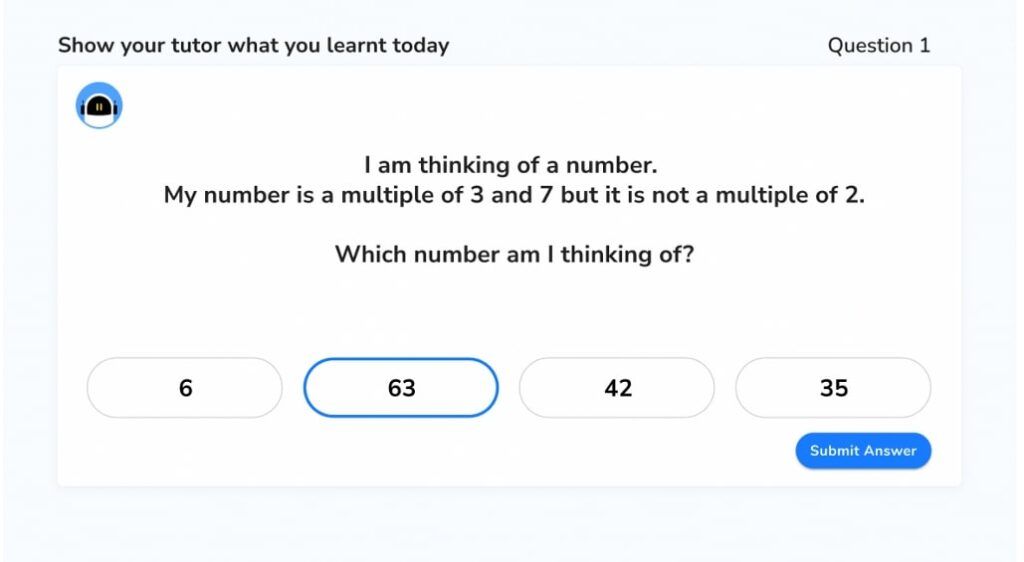
After each tutoring session, pupils complete post-session questions. The information gathered from these ensures we always have an up-to-date and accurate picture of pupils’ learning and can reflect this in the learning objectives pupils are covering.
Adaptive teaching tips
It can be challenging for early career teachers and experienced teachers alike to embed adaptive teaching strategies into their day-to-day planning and teaching. However, it is likely that teachers are already employing many of these already.
Here are some tips to support adaptive teaching at every stage of a lesson:
Before the lesson
- Know your learners
- What is their prior knowledge?
- Are there any SEND or EAL pupils in the class that have particular needs?
Use data from assessments or their class work to ensure you have a full picture of where the class is and what they need to learn.
- Anticipate barriers to learning
- Is there any special vocabulary needed?
- What are the common misconceptions of the topic?
- Do the SEND or EAL pupils need additional material or technology?
Target to address these barriers with sources such as texts, powerpoints or worksheets.
During the lesson
- Use formative assessment techniques
- Use of diagnostic questions or planned hinge questions
- Mini-whiteboards
- Low-stakes tests
You need to know what they know during the lesson, not after. In-class assessment techniques will inform you when an adaptation is needed.
- Make in-the-moment adaptations
- Read a text out loud
- Project or draw a diagram
- Use an analogy that learners can relate to
- Increase scaffolding or remove any temporary support when necessary
- Provide extra examples alongside non-examples
- Use peer support
If you see the need for an adaption, make it straight away. What will benefit one learners will more than likely benefit them all.
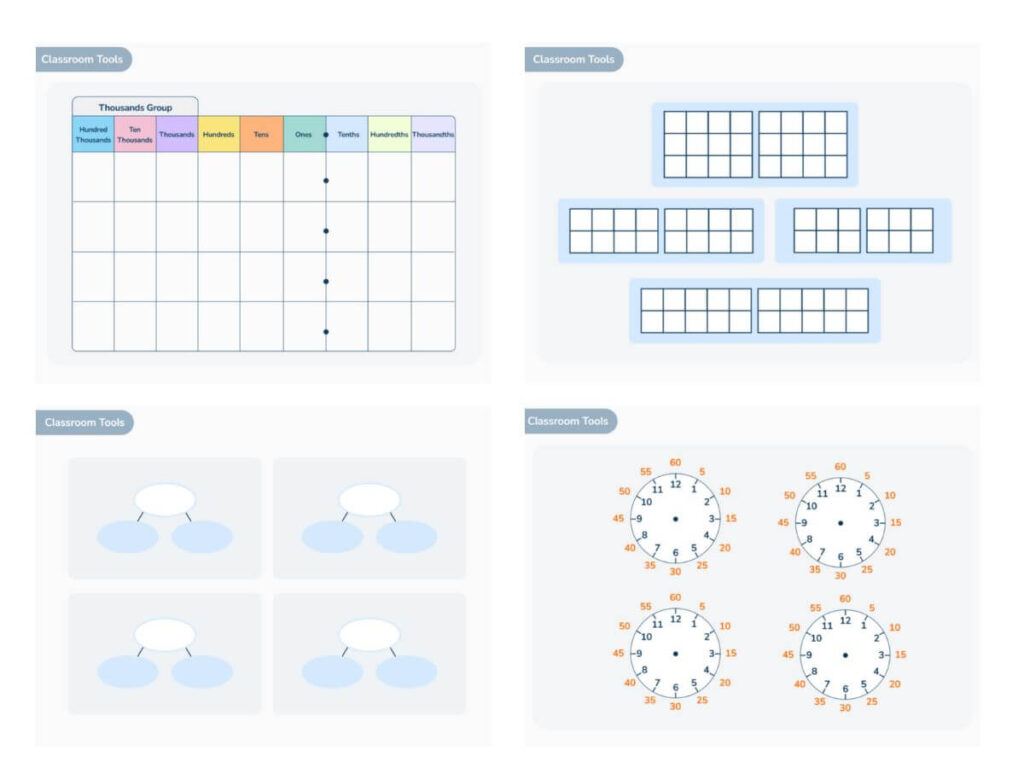
After the lesson
- Act on what YOU have learnt from the lesson
- Did all learners achieve the required level of understanding and knowledge?
- What learners will need more support next lesson?
- What learners exceeded your expectations?
Use this data to inform your future planning.
What are the advantages and disadvantages of adaptive teaching?
The 2015 PISA results showed that adaptive instruction is one of the approaches most positively correlated with student performance. Done well, adaptive teaching has numerous benefits, including:
- Allowing for personalised learning experiences for each student;
- Helping to identify and address student gaps in real-time;
- Enhancing learners’ engagement and motivation;
- Supporting teachers in providing targeted and effective instruction;
- Providing opportunities for students to work at their own pace;
- Enabling teachers to use technology and data to inform teaching practices;
- Improving student outcomes and achievement.
However, there may be instances where these strategies are hard to implement. Adaptive teaching can have drawbacks, such as:
- Cost: The implementation of adaptive teaching strategies can require significant investment in technology and resources.
- Time: Teachers may require a period of adjustment to become familiar with the technology and new teaching strategies.
- Over-reliance on technology: There is a potential risk that teachers may rely too heavily on technology, which could have negative consequences if the technology fails or is unavailable.
- Reduced teacher autonomy: Some teachers may perceive adaptive teaching strategies as limiting their ability to make independent decisions about teaching and learning.
- Inequality: There is a risk that adaptive teaching may inadvertently reinforce existing inequalities if students do not have equal access to technology or if technology is used to replace human interaction and support.
Useful tools for adaptive teaching
To ensure that adaptive teaching does not increase teacher workload, there are a number of helpful tools available.
1. Mini-whiteboards
Small dry erase boards are perfect for formative assessment and instant feedback, they can give incredible insight into the level understanding of the whole class.
When activities and questions are planned carefully and the data gathered is used effectively, mini whiteboards can be invaluable tools for any classroom.
2. Visualisers
Visualisers are a great way of modelling problems for a class to show them exactly what they need to write in order to be successful. They can also be used to share a learner’s work with the wider class to demonstrate a particularly effective method or a common misconception.
3. Graphic organisers
Graphic organisers and knowledge organisers are useful visual aids to show connections between concepts. They have been proven to improve comprehension and retention of information. Learners could create their own as part of their learning over time.
4. Teaching assistants
Knowing your class is very important to ensure that the correct support is provided for them. If you have teaching assistants in your class they may know certain learners better than you. Using them to their full potential and involving them in the planning stages is an important Adaptive Teaching strategy that must not be forgotten.
5. Words banks
Identify the key vocabulary pupils will need to understand in order to access the lesson. Consider displaying them clearly on the whiteboard or creating print outs that pupils can refer to. This doesn’t need to be time-consuming and can be particularly supportive for pupils with EAL and SEND.
What are some examples of adaptive teaching?
Here are some scenarios where adaptive teaching in action can result in achieving the desired lesson objectives for all learners.
1. A lesson on construction
Problem: The teacher sees that some learners are struggling to remember the steps required for an angle bisector and are unable to follow a list of instructions.
Solution: The teacher is able to use a visualiser to record themselves or another learner carrying out the steps and then projects the recording on loop. The struggling learners are able to rewatch the steps and use the model to successfully carry out the process themselves.
2. A lesson on inequalities
Problem: Some learners are confusing the < and > symbols.
Solution: The teacher displays this image. Using a concrete, diagrammatic representation consolidates the understanding of all learners.

3. A lesson on trigonometry
Problem: A number of students are getting the same wrong answers for missing values in a right angled triangle.
Solution: The teacher uses mini-whiteboards to do an on-the-spot assessment of understanding. The teacher then writes a step-by-step procedure on the whiteboard for learners to follow, followed by another mini-whiteboard assessment. The teacher can then remove the steps from the board and quiz students again at the end of the lesson using the mini-whiteboards.
Taking a whole-school approach to adaptive teaching
As with most teaching strategies and approaches, any teacher implementing adaptive teaching will find it easier and more effective if there is whole-school support for it.
As SLT, if you have the opportunity to discuss adaptive teaching as a team or run an INSET day around the topic, you’ll reap the benefits.
There are several common misconceptions around adaptive teaching and differentiation – it’s important to achieve a shared vision and understanding to support excellent implementation.
Some topics to discuss with your departments and teams include:
- Is the term adaptive teaching well known or in-use around the school (and not just in a SEND context)?
- What are the existing assumptions around differentiation and adaptive teaching?
- What is the evidence for adaptive teaching? Is it worth the effort for the impact?
- What will motivate staff to give it a go and keep trying even if they don’t see immediate results?
- What are some first steps that all teachers could start with and build from?
Adaptive teaching resources available from Third Space Learning
Third Space Learning has a rich library of resources for teachers working with children at different levels of understanding, and with different strengths and needs.
Here are some of Third Space Learning’s resources created with adaptive teaching in mind, for both primary and secondary pupils:
GCSE Maths Revision Guides
Each GCSE Maths Revision Guide includes step-by-step procedures for all concepts to provide scaffolding for those learners while learners are developing confidence with a topic. The worked examples follow these steps and include lists of common misconceptions and ways to avoid them. There are also multiple choice practice questions that can be used to assess understanding and highlight misconceptions.
GCSE Diagnostic Questions
Diagnostic questions are a quick and easy way of assessing your students’ knowledge and understanding of a particular topic.
Students may be struggling with a given topic for a number of different reasons. Diagnostic questions can help to identify the particular misconception that the student has and help to determine the specific support they will need in order to improve.
KS1 and KS2 Diagnostic Quizzes
Assess learning before or after a series of lessons with our KS1 and KS2 Diagnostic Questions and then adapt future lessons depending on the data collected. The questions can also be used individually in lessons with mini-whiteboards, to instantly assess how learners are progressing.
Hinge questions
Hinge questions have a specific goal of assessing all pupils’ understanding and thinking at that point. The responses to the hinge question guide the teacher as to what the next stage of the lesson should be – whether to recap or move on.
Here, you can find some sample practice hinge questions to support your teaching.
Adaptive teaching is focused on how teachers can help all learners reach the same goals and learn the same skills and concepts. This is in contrast to differentiation which became overly focused on task design.
When executed well, the concept of adaptive teaching should result in fewer knowledge gaps forming in students, not more (which was often the downfall of poor differentiation).
If we change our way of thinking from task design and differentiated outcomes towards the principles of adaptive teaching strategies, then learners in primary school and secondary school can receive high quality teaching and make better long term progress, alongside their peers in the classroom.
Read more excellent teaching and professional development articles
Adaptive teaching is a highly effective method as it provides tailored learning experiences for each student. By utilising technology, continuous assessment, and data analysis, teachers can identify areas where learners may require additional support to achieve their objectives. The adaptable grouping of students also creates an optimal learning environment, resulting in improved learning outcomes for all individuals.
Adaptive instruction in the classroom is a personalised teaching approach that utilises continuous assessment and targeted resources to support students in achieving their learning objectives. Additionally, this approach allows for flexible grouping of students and seeks to enhance student engagement, motivation, and learning outcomes.
DO YOU HAVE STUDENTS WHO NEED MORE SUPPORT IN MATHS?
Every week Third Space Learning’s maths specialist tutors support thousands of students across hundreds of schools with weekly maths intervention programmes designed to plug gaps and boost progress.
Since 2013 these personalised one to one lessons have helped over 150,000 primary and secondary students become more confident, able mathematicians.
Learn about the diagnostic assessment or request a personalised quote for your school to speak to us about your school’s needs and how we can help.

